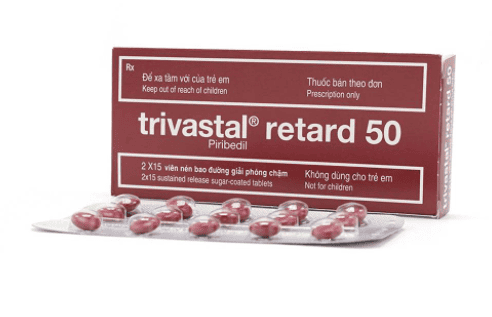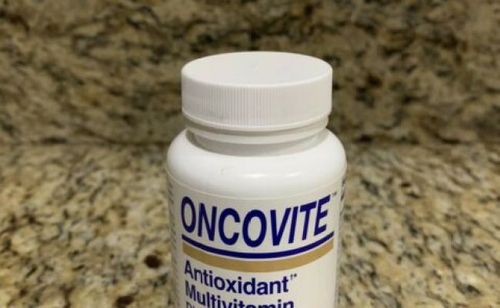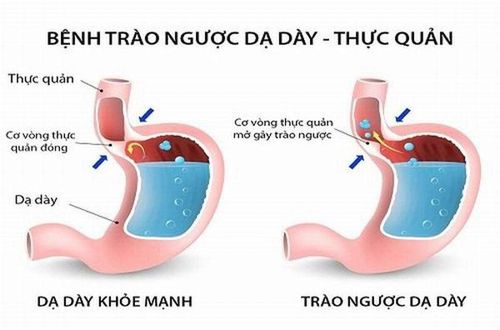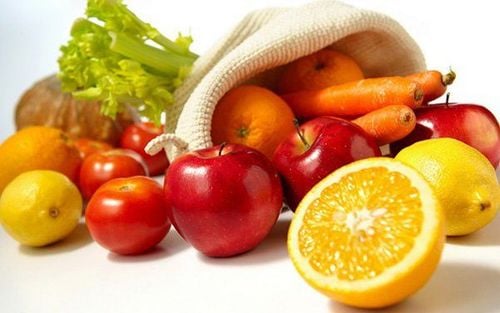This is an automatically translated article.
While you may know that certain foods when consumed regularly can increase your risk of heart disease, it can still be difficult to change your eating habits. Here are eight heart-healthy diet tips you should follow. When you determine which foods should be added more and which foods should be limited, it will help you move towards a better diet for heart health in particular and overall health in general.1. Control your portion sizes
How much you eat plays an important role similar to what you put in your body every day. Consuming too much food at once makes the body feel like it is "crammed". This can lead to higher calorie intake than necessary. This is especially true when you're dining in a restaurant, as the portions served will often be more than we need.To control your portion sizes, you should use small bowls or plates to store food. Also, eat more low-calorie but nutrient-dense foods, such as vegetables and fruits, and cut back on foods high in calories and sodium, such as refined, processed foods. ready-made or fast food. With this strategy will help you form a healthy diet as well as keep your heart and body healthy.
Besides, you should also monitor your portion sizes. The recommended number of servings for each food group can vary depending on your specific diet or nutritional guidelines you're following. From the perspective of nutritionists, servings refer to a specific amount of a food, determined by common measurements such as ounces, cups, or pieces. For example, one serving of pasta would be equivalent to 1/3 – 1/2 cup or the size of a hockey puck. One serving of meat, chicken or fish would be equivalent to 2 – 3 ounces, or about the size and thickness of a deck of cards.
Overall, assessing and determining portion sizes is a skill we can all learn. You can use measuring cups and spoons or scales to get used to portioning. These portion measures may not be necessary if you already feel confident in your ability to judge and determine portion sizes.

Đánh giá và xác định khẩu phần ăn là một kỹ năng mà chúng ta hoàn toàn có thể học được
2. Add more vegetables and fruits
Vegetables and fruits are considered a rich source of vitamins and minerals. These foods are usually low in calories but very high in fiber. Similar to other plants or plant-based foods, vegetables and fruits contain substances that help effectively prevent cardiovascular disease. In addition, eating more fruits and vegetables in your daily diet can help you cut down on higher-calorie foods, such as cheese, meat, and fast food.You can easily add more vegetables and fruits to your diet in a variety of ways. Health care professionals recommend that washed vegetables should be stored in the refrigerator and can be chopped ready to use when needed. In addition, you should also keep fruits in the kitchen to remind yourself to eat them often. You can also choose recipes that have vegetables or fruit as the main ingredient, such as sautéed vegetables or fresh fruit mixed into a salad.
| Trái cây và rau nên lựa chọn | Trái cây và rau cần hạn chế |
|
Rau và trái cây tươi hoặc đã được đông lạnh Các loại rau đóng hộp ít natri Trái cây đóng hộp được đóng gói trong nước trái cây hoặc nước thông thường |
Dừa Rau với nước sốt kem Rau chiên hoặc tẩm bột Trái cây đóng hộp được đóng gói trong siro đặc Trái cây đông lạnh có thêm đường |
3. Choose Whole Grains
Whole grains are a great source of fiber and other nutrients that play a role in blood pressure regulation and heart health. You can increase the amount of whole grains in your heart-healthy diet by substituting them for refined grain products. Alternatively, you can try some new whole grains, such as quinoa, farro, or whole-grain barley.| Các sản phẩm ngũ cốc nên lựa chọn | Các sản phẩm ngũ cốc cần hạn chế hoặc tránh sử dụng |
|
Bột mì Bánh mì nguyên hạt, tốt nhất là bánh mì 100% lúa mì hoặc bánh mì 100% ngũ cốc nguyên hạt Ngũ cốc giàu chất xơ, với 5 g chất xơ trở lên trong một khẩu phần ăn Ngũ cốc nguyên hạt như gạo lứt, lúa mạch và kiều mạch (kasha) Mì ống nguyên chất Bột yến mạch |
Bột mì trắng đã tinh chế Bánh mì trắng Bánh nướng xốp Bánh quế đông lạnh Bánh mì ngô Bánh rán Bánh quy Bánh mì nhanh Bánh ngọt Bánh nướng Mì trứng Bắp rang bơ Bánh quy snack giàu chất béo |
4. Limit consumption of unhealthy fats
Limiting your intake of saturated and trans fats is an important step in helping you lower your blood cholesterol and prevent your risk of coronary heart disease. High blood cholesterol levels can lead to a buildup of plaque in the arteries, also known as atherosclerosis, which can increase risk factors for heart attack and stroke.Here are the American Heart Association guidelines for how much fat to consume in a heart-healthy diet:
Saturated fat: Do not consume more than 5 - 6% of total calories daily or no more than 11-13 grams of saturated fat if you're following a 2000-calorie-a-day diet. Trans fats (trans fats): Consumption should be avoided. You can reduce the amount of saturated fat in your diet by cutting fat out of meat or choosing lean meats with less than 10% fat. Alternatively, you can add a little butter, margarine or shortening when cooking.
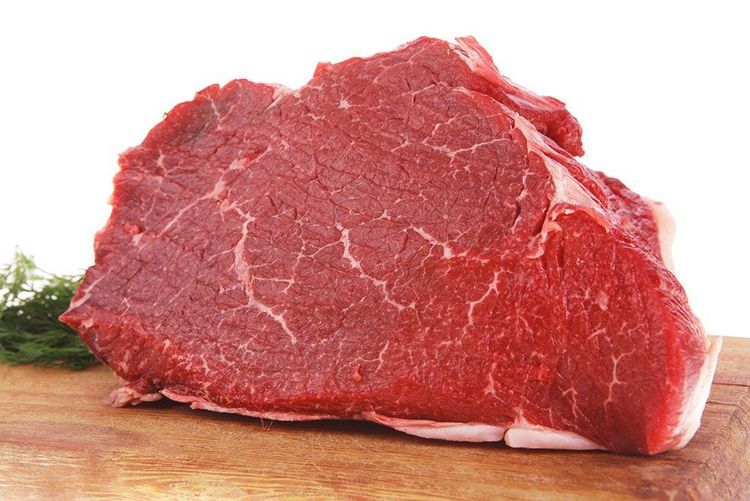
Bạn có thể giảm lượng chất béo bão hòa trong chế độ ăn uống bằng cách cắt bớt chất béo khỏi thịt hoặc lựa chọn các loại thịt nạc có ít hơn 10% chất béo
Besides, you should also check the food label of some cakes, cookies, cakes or chips before using. Some of these foods, even those labeled "reduced fat," may be made with oils that contain trans fats. To spot trans fats in foods, you can identify them by the phrase "partially hydrogenated" in their ingredients list.
When you use fats, choose monounsaturated fats, such as canola or olive oil. Some polyunsaturated fats found in certain types of fish, nuts, seeds or avocados are also considered a good choice for your diet. Using these fats in place of saturated fats can help lower your total blood cholesterol. However, all fats contain a large amount of calories, so it is important to use them in moderation.
Ground flaxseeds are a food high in healthy fats and fiber, so you can add them to your heart-healthy diet. Flaxseeds are small, brown seeds that are high in fiber and omega-3 fatty acids. Several studies have shown that flaxseeds can help lower your cholesterol levels. You can add ground flaxseed to yogurt, hot cereal, or apple sauce for an extra boost of nutrients.
| Chất béo nên lựa chọn | Chất béo cần hạn chế |
|
Dầu ô liu Dầu hạt cải canola Dầu thực vật và hạt Bơ thực vật không chứa các chất béo trans Bơ thực vật làm giảm cholesterol, chẳng hạn như Benecol, Promise Activ hoặc Smart Balance Hạt quả hạch Quả bơ |
Bơ Mỡ lợn Mỡ thịt xông khói Nước thịt Sốt kem Bột kem béo thực vật Bơ thực vật hydro hóa Bơ ca cao trong sô cô la Dầu dừa, dầu cọ, dầu hạt bông và dầu hạt cọ |
5.Choose a low-fat protein source
Fish, poultry, lean meats, eggs and low-fat dairy products are your best sources of protein. However, you need to be careful to choose foods that contain less fat, such as skim milk instead of whole milk, or skinless chicken breast instead of fried chicken.Fish is a great alternative to high-fat meats. Certain types of fish are rich in omega-3 fatty acids, which can lower blood triglycerides. The highest amounts of omega-3 fatty acids are found in cold water fish, such as mackerel, salmon, and herring. Some other sources that are also rich in omega-3s are walnuts, flaxseeds, canola oil, and soybeans.
Legumes like lentils and peas are also considered good sources of protein, and contain very little fat and no cholesterol. These are all good substitutes for meat. You can replace animal protein with plant protein, for example a soy burger can reduce fat and cholesterol levels, while helping to increase your fiber intake.
| Protein nên lựa chọn | Protein cần hạn chế hoặc tránh sử dụng |
|
Các sản phẩm từ sữa ít béo, chẳng hạn như sữa tách béo hoặc ít béo (1%), sữa chua và pho mát Trứng Cá, đặc biệt là cá nước lạnh, chẳng hạn như cá hồi Gia cầm không da Cây họ đậu Đậu nành và các sản phẩm từ đậu nành, chẳng hạn như bánh mì kẹp thịt đậu nành và đậu phụ Thịt nạc xay |
Sữa nguyên chất béo và các sản phẩm từ sữa khác Thịt nội tạng, chẳng hạn như gan Thịt mỡ và thịt cẩm thạch (chẳng hạn thịt đỏ) Sườn non Xúc xích và lạp xưởng Thịt ba rọi |
6. Reduce sodium consumption
High sodium consumption can contribute to elevated blood pressure levels – a major risk factor for cardiovascular disease. Therefore, reducing sodium is an important part of a heart-healthy diet. Here are some of the American Heart Association's recommendations for salt intake in adults, including:Healthy adults should consume no more than 2,300 milligrams (mg) of sodium per day (equivalent to about approx. a teaspoon of salt). Most adults in general should consume no more than 1,500 mg of sodium per day.
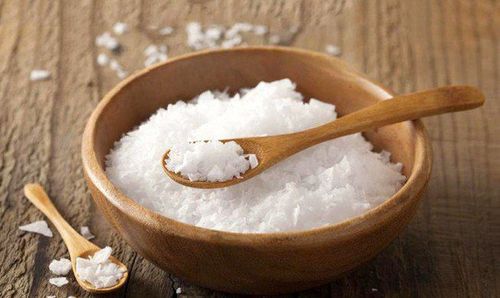
Tiêu thụ nhiều natri có thể góp phần làm tăng mức huyết áp – một yếu tố nguy cơ chính của bệnh tim mạch
If using canned or processed foods, you should read labels carefully and choose low-sodium varieties. Be wary of foods that are said to be low in sodium as they may be dried with sea salt instead of regular table salt, where sea salt has similar nutritional values to regular salt.
| Các món ít muối nên lựa chọn | Các món có nhiều muối cần hạn chế hoặc tránh sử dụng |
|
Các loại thảo mộc và gia vị Hỗn hợp gia vị không muối Súp đóng hộp ít muối hoặc đồ ăn chế biến sẵn Các loại gia vị được giảm muối, chẳng hạn như nước tương giảm muối hoặc tương cà giảm muối |
Muối ăn Súp đóng hộp và thực phẩm chế biến sẵn, chẳng hạn như món đông lạnh Nước ép cà chua Gia vị như tương cà, nước tương và sốt mayonnaise Bữa ăn tại nhà hàng |
7. Plan: Create a menu every day
You need to know which foods to add to your healthy diet and which to limit. Ideally, plan your meals each day for yourself and your family.You can create a daily menu by combining the 6 strategies listed above. When choosing foods for each meal and snack, you should prioritize fruits, vegetables, and whole grains. In addition, you should choose sources of lean protein and healthy fats, and limit salty foods.
Besides, evaluate portion sizes and add a variety of foods to your menu. For example, if you eat grilled salmon for dinner, you can switch to a burger with black beans for dinner the next night. This will help ensure you're getting all the nutrients your body needs. On the other hand, variety also makes your meal more enjoyable.

Bạn có thể tạo thực đơn hàng ngày bằng cách kết hợp vận dụng 6 chiến lược đã được liệt kê ở trên
8. Sometimes "let loose" yourself
Allow yourself to relax and eat from time to time, as a candy bar or a few chips won't detract too much from your healthy diet. However, don't make it an excuse to break your eating plan. Ideally, you should balance everything in your nutrition and stick to them for the long term. It is important to always eat healthy foods.Please dial HOTLINE for more information or register for an appointment HERE. Download MyVinmec app to make appointments faster and to manage your bookings easily.
Reference source: mayoclinic.org




